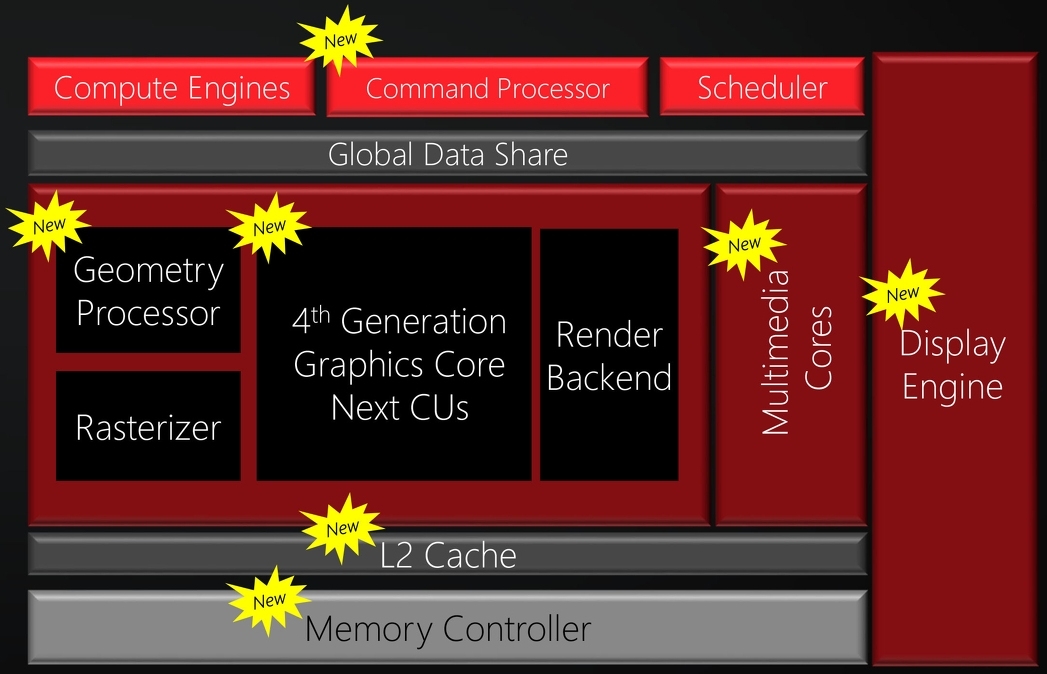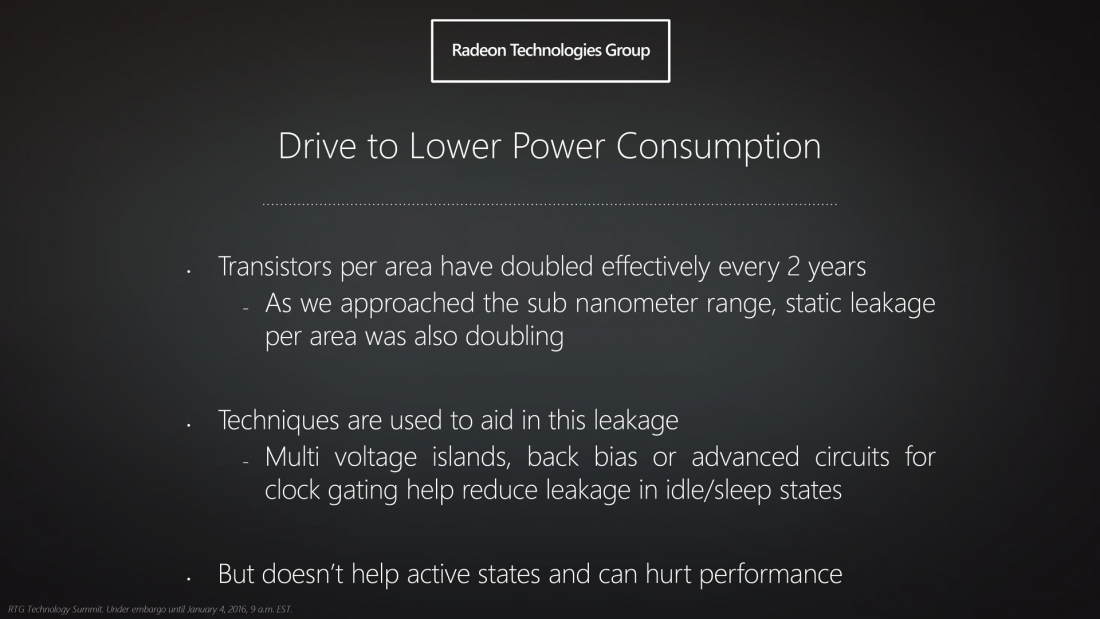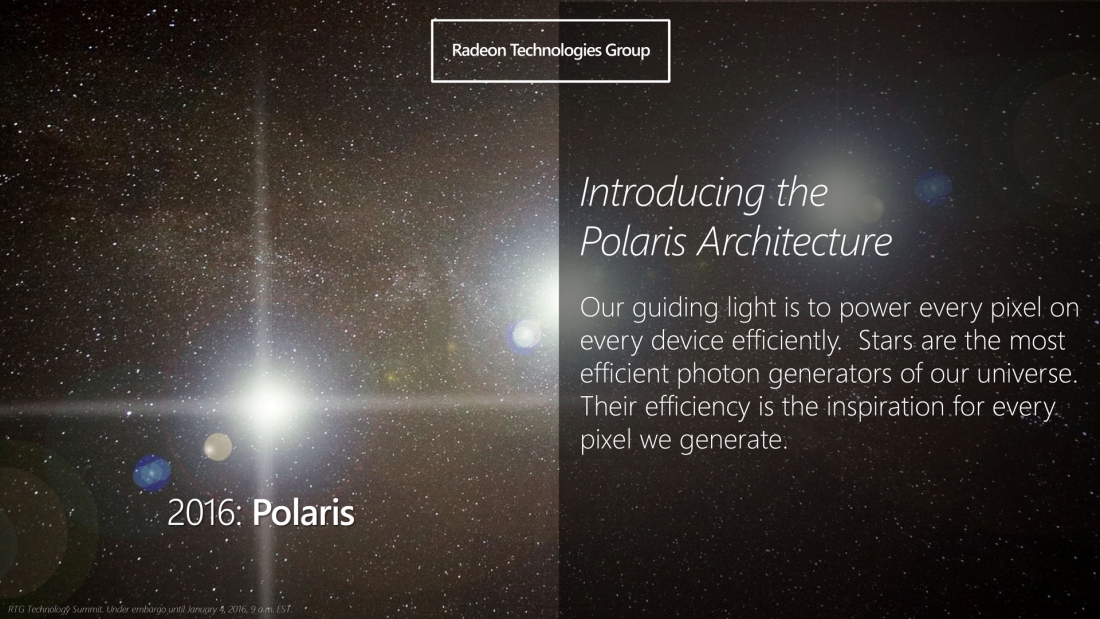AMD on Monday unveiled its fourth-generation Graphics Core Next (GCN) architecture. Polaris is significant in that it moves from the tired 28nm manufacturing process to a revitalized 14nm FinFET process which, according to Radeon Technologies Group SVP and Chief Architect Raja Koduri, results in the largest performance-per-watt jump in the company's history (which also includes ATI).

As EuroGamer points out, the architecture includes a number of new features and improvements including a primitive discard accelerator, instruction pre-fetch, hardware scheduler, improved shader efficiency and better memory compression. It also introduces support for DisplayPort 1.3 and HDMI 2.0a
What sort of power-savings can we expect? Although it's early, the recent side-by-side comparison in Star Wars Battlefront is telling. As seen in the clip above, the system running AMD's new board was able to do so at nearly half the power consumption as the competition, an Nvidia GeForce GTX 950 (~86 watts versus ~140 watts). This will translate to major advancements in notebook GPUs.
What if you don't care all that much about power consumption? Is there still a reason to get excited? Absolutely.

Efficiency is only one part of the puzzle. More real estate to work with means AMD can cram far more transistors into the same amount of space used by today's top cards. What you'd then have is a card that has the same power requirements as today's top dog with far more transistors in play which of course translates to far more processing power.
Polaris-based GPUs are expected to go on sale by mid-2016. With any luck, we'll see some more details leak out over the course of CES.
